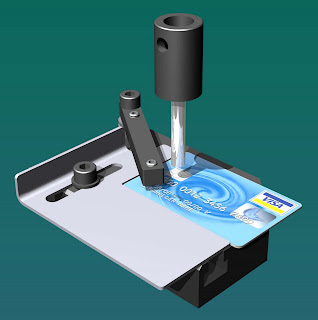106-001 - Self-Aligining Fixture

It's sometimes necessary to attach a grip or fitting that has no way of self aligning , in these cases we've developed several ingenious ways to add this function to the machines. One of these methods is to use a Self- Aligning Fixture like the one shown in the picture. As it is designed to fit a 150 kN U-Series machine it is somewhat massive. The top thread being 1" UNF in diameter and the bottom an M33. It weighs, a not insignificant , 7kg; has a 110mm body diameter and is nearly a foot tall. The central pin that you can see has is supported by a Nitrile block which allows it to float, whilst absorbing the shock of a sample failure.

